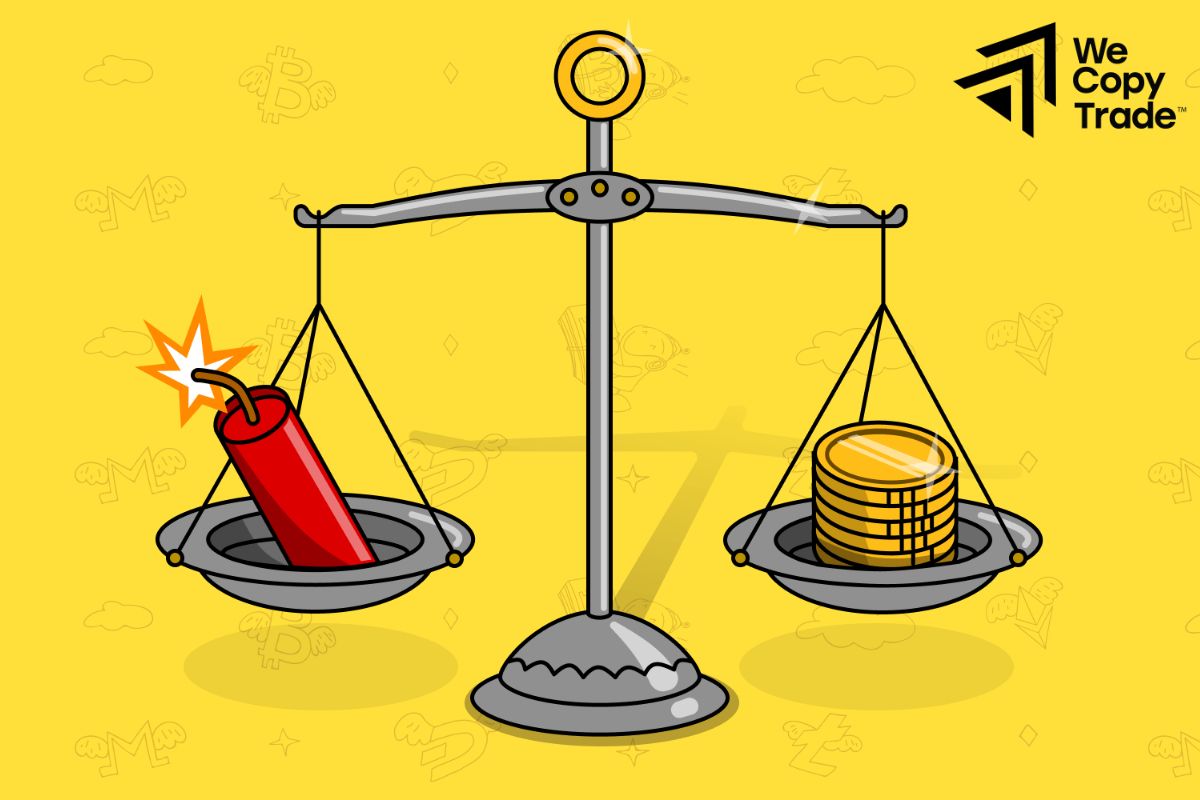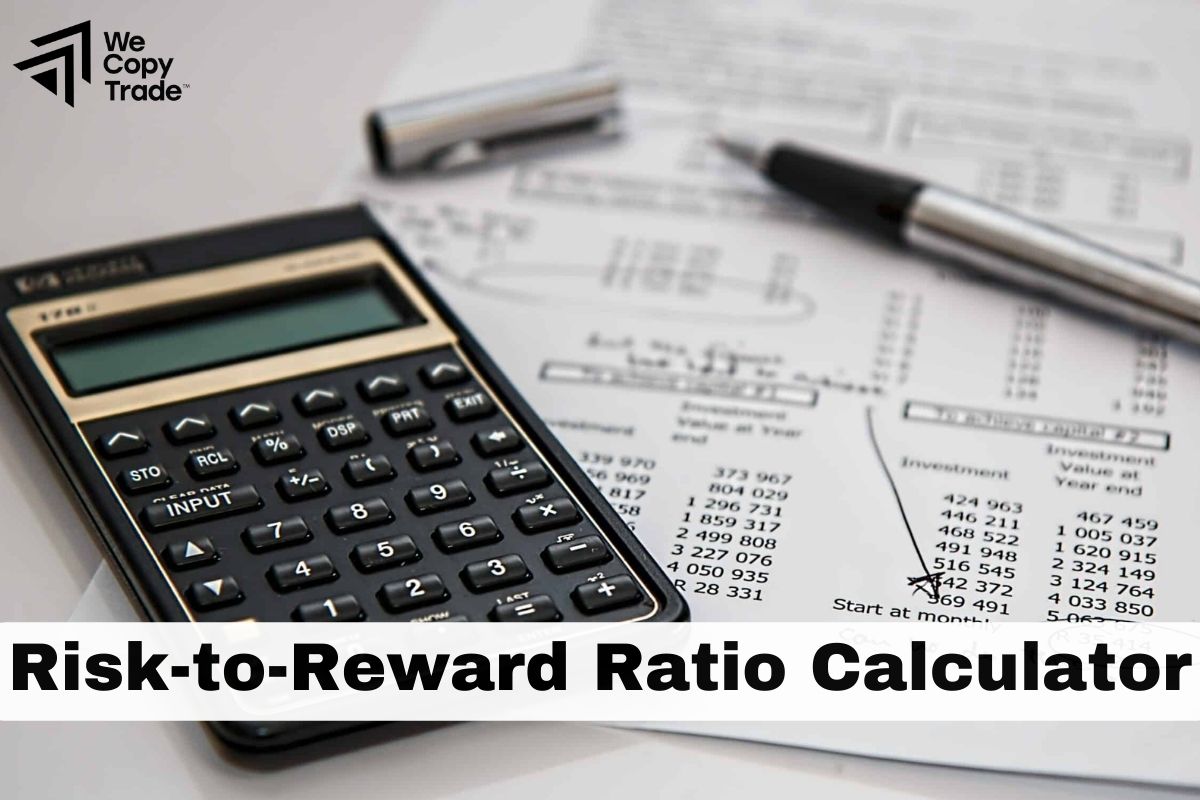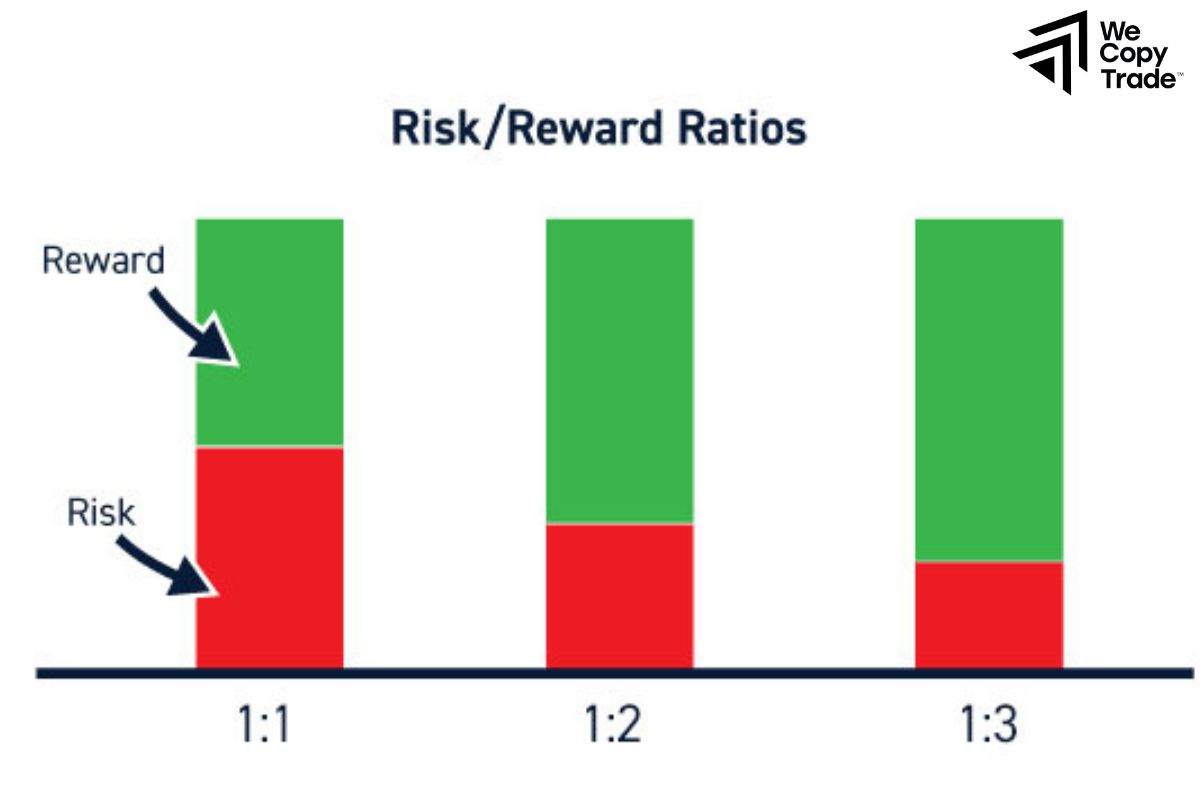Good risk management is one of the most important factors that directly affects your trading results. To do this well, successful investors often use the Risk-to-Reward Ratio. So how to use this ratio effectively. Here I will help you calculate and apply the ratio reasonably!
What Is the Risk-to-Reward Ratio?

The Risk-to-Reward Ratio is an important tool for investors to evaluate and compare different investment opportunities. Specifically, they will compare the amount of money you can lose (risk) and the amount of money you can earn (reward) from a trade.
The expected return is the profit that an investor expects to earn if the trade goes according to plan. The R/R ratio indicates the level of risk that an investor is willing to accept in order to achieve the desired return. A high R/R ratio (e.g. 1:3 or higher) indicates that the potential profit is greater than the potential risk.
For example, let’s say you buy a stock for $100, place a stop-loss order at $95, and place a take-profit order at $115. In this case, your R/R ratio is (115-100)/(100-95) = 3:1. This means you are risking losing $5 for the chance to make $15. Generally, a risk-to-reward ratio greater than 1:3 is considered quite good. This means you are taking the chance to make more than you can afford to lose.
See more:
- Contrarian Trading – 5 Valuable Lessons of Famous Contrarian
- The easiest way to become an investor in Social Trading
- Maximum Your Profit From Taking Advantages Market Sentiment
Advantages and Disadvantages of Risk-to-reward ratio strategy
To be more successful in trading, smart investors should note the following advantages to take advantage of and disadvantages to overcome:
Advantages

- The risk/reward ratio helps you assess whether an investment is worth your time and money. If the ratio is too low, meaning the risk is too high compared to the potential profit, you should reconsider.
- You can use this ratio to compare different investments and choose the ones with the most attractive ratios.
- A good risk/reward ratio helps you minimize risk and increase the possibility of achieving profit
- The risk/reward ratio helps you define a clear goal for each trade. You know exactly how much you want to earn and how much risk you are willing to accept.
- By setting appropriate stop-loss and take-profit orders, you can control your losses and protect your capital.
- The risk/reward ratio helps you avoid emotional investment decisions and maintain a disciplined approach.
- When you know how to manage risk, you can be more confident in making trades with high profit potential.
For example:
Let’s say you are considering investing in two stocks. Stock A has a risk/reward ratio of 1:2, while stock B has a ratio of 1:5. This means:
Stock A: If you invest in stock A, you can lose $1 but can earn $2.
Stock B: If you invest in stock B, you can lose $1 but can earn $5.
Clearly, stock B has the potential to yield higher profits, but it also carries greater risk. Therefore, you need to consider carefully before making a decision.
Disadvantages

- While the risk-to-reward ratio is a useful tool for assessing the potential return on an investment, it also has certain limitations that investors should be aware of:
- The risk/reward ratio simply compares the amount of money you can make and the amount you can lose, but it does not tell you how likely each scenario is to happen.
- The financial markets are complex, and relying solely on a single number to make investment decisions can ignore many other important factors such as market conditions, price volatility, and investor experience.
- The accuracy of the risk/reward ratio depends entirely on the quality of the investor’s research and judgment. If misjudged, the ratio can lead to poor investment decisions.
- The risk/reward ratio focuses on only two factors: risk and return, while there are many other factors that can affect the performance of an investment, such as holding time, transaction costs, and market volatility.
- During periods of high market volatility, the risk/reward ratio can become less reliable, as prices can change very quickly and increase the risk of slippage.
Risk-to-Reward Ratio Calculator

To calculate your Risk-to-Reward Ratio, you need to determine two main factors:
- Loss potential: This is the maximum amount of money you can lose if the trade doesn’t go as planned. It’s usually determined by the distance between the current price and your stop-loss.
- Profit potential: This is the maximum amount of money you can make if the trade is successful. It’s usually determined by the distance between the current price and your take-profit.
Formula:
Risk/Reward ratio = Loss potential / Profit potential
For example:
Let’s say you buy a stock for $100. You set a stop-loss order at $95 (meaning if the price falls below $95, you’ll sell to limit your losses) and a take-profit order at $115 (meaning if the price rises to $115, you’ll sell to lock in your profits).
- Loss potential: $100 – $95 = $5
- Profit potential: $115 – $100 = $15
So the Risk-to-Reward Ratio for this trade is:
Risk/reward ratio = $5 / $15 = 1/3 or 1:3
This means you are risking a loss of $1 for the chance to make $3.
The 3:1 ratio strategy

- In the world of Forex trading, finding the perfect formula for risk-to-reward is not easy. Every trade is unique, and the ideal ratio can vary depending on many factors such as the market, the currency pair, and your trading strategy. Here’s a look at the 3:1 ratio – the most common and safest ratio to use.
- When the reward is higher than the risk, you only need a few winning trades to make up for the losing trades. By setting a clear loss limit, you protect your capital and avoid large losses. When you have a clear plan and are confident in your Risk-to-Reward Ratio, you will feel more confident and make better investment decisions.
For example:
Imagine you enter 10 trades. Of these, 5 trades win, each of which makes you $3,000. The other 5 trades lose, each of which costs you $1,000.
In total, you lost $5,000 but won $15,000. So, even if you only win 50% of your trades, you still make a profit of $10,000.
A 3:1 reward-to-risk ratio is a good goal to aim for. However, this is just a suggestion. You can adjust this ratio to suit your investing style and risk tolerance.
Although the 3:1 Risk-to-Reward Ratio is considered by many to be the “holy grail” of trading, it is not that simple. To achieve this ratio, we need to face several real-world challenges:
- Spread is the difference between the buy and sell price. The larger the spread, the more profit you need to make to achieve a 3:1 ratio.
- The financial markets are constantly changing. Sometimes, prices can move very quickly and cause you to be stopped out before you reach your profit target.
- If you trade with a small position, it will be more difficult to reach your profit target, as you need to make a certain number of pips to make a significant profit.
Conclusion
In conclusion, the risk-to-reward ratio is a useful tool to help investors make smarter investment decisions. Once you understand how to calculate and apply this ratio, you can effectively manage risk and increase your chances of success in investing. However, don’t rely too much on it, but combine it with other methods to make it easier to succeed.
See now:











